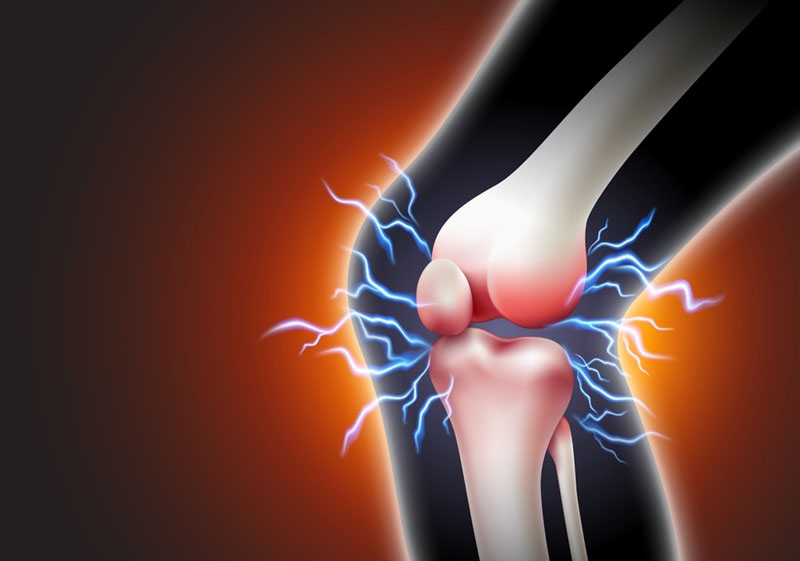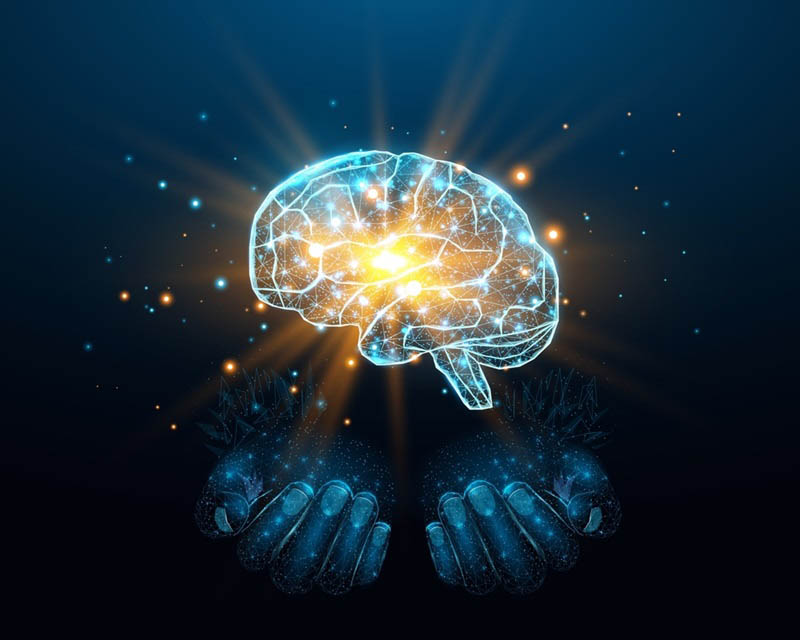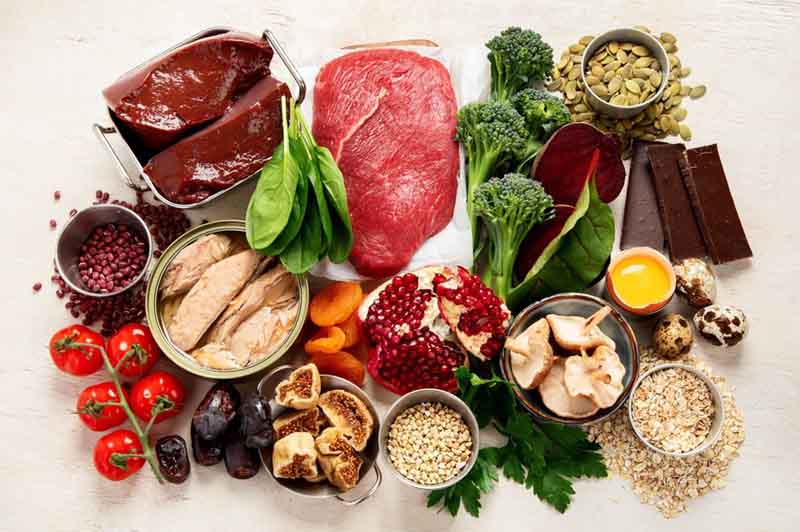Collagen là loại protein có nhiều nhất trong cơ thể con người, đóng vai trò là loại keo kết dính các mô lại với nhau. Hiện nay sử dụng các sản phẩm bổ sung collagen để giữ cho làn da tươi trẻ trở nên phổ biến. Cùng tìm hiểu về collagen để sử dụng hiệu quả hơn qua bài viết sau đây.

Collagen là một protein thiết yếu, chiếm tới 30% lượng protein trong cơ thể và đóng góp đến 70% cấu trúc da. (1) Về mặt cấu tạo, collagen được tạo thành chủ yếu từ các axit amin glycine, proline và hydroxyproline. Chúng liên kết với nhau thành chuỗi ba, tạo nên cấu trúc xoắn ba đặc trưng của collagen.
Ngoài ra, collagen còn là một phân tử dạng sợi, dai, không hòa tan, đóng vai trò quan trọng trong cấu trúc của da, gân, mạch máu, sụn, xương và mô liên kết. Đồng thời, collagen còn được tìm thấy ở răng, mạch máu và phần giác mạc. Collagen là thành phần thiết yếu của ma trận ngoại bào, một mạng lưới phân tử liên kết các mô trong cơ thể lại với nhau. Hơn nữa, nó còn tham gia vào nhiều quá trình quan trọng của tế bào, bao gồm: phục hồi mô, phản ứng miễn dịch, thông tin tế bào và di chuyển tế bào.
Khi tuổi tác của chúng ta càng lớn thì collagen trong cơ thể cũng sẽ bị phân mảnh, hoạt động của tế bào sợi giảm sút và quá trình sản xuất collagen chậm lại. Đặc biệt, phụ nữ và những người được chỉ định là nữ khi sinh ra (AFAB) sẽ bị giảm đáng kể lượng collagen sản xuất sau thời kỳ mãn kinh. Những thay đổi này, cùng với sự mất hụt elastin (một loại protein cấu trúc quan trọng khác) dẫn đến các dấu hiệu lão hóa như da chảy xệ, nếp nhăn và tổn thương da.
Các nhà khoa học đã tiến hành phân loại được khoảng 28 loại collagen khác nhau. Sự khác biệt giữa chúng nằm ở cách các phân tử được lắp ráp, các thành phần tế bào được bổ sung và vị trí phân bố trong cơ thể. Điểm chung là tất cả các sợi collagen đều có cấu trúc xoắn ba.
Dưới đây là 5 loại Collagen chính và vai trò của chúng:

Collagen có tác dụng gì đối với cơ thể? Collagen đóng vai trò như “khung sườn” cho cơ thể, tạo sự kết nối chặt chẽ giữa các mô và bộ phận, giúp duy trì cấu trúc, chức năng của cơ thể. Sau đây là 8 lợi ích sức khỏe đã được khoa học chứng minh khi sử dụng collagen.
Theo nghiên cứu của Giáo sư Richard Farndale và nhóm bạn của ông tại Đại học Cambridge, collagen đóng vai trò thiết yếu trong việc duy trì cấu trúc thành mạch máu. (4) Nó nằm ở lớp bên trong, ẩn dưới lớp tế bào lót. Do đó, khi mạch máu bị tổn thương, collagen sẽ lộ ra ngoài và kích thích tiểu cầu trong máu tập trung lại, hình thành cục máu đông. Bên cạnh đó, collagen còn góp phần hạn chế nguy cơ tai biến mạch máu não, tắc nghẽn động mạch vành và tăng huyết áp.
Trong số 28 loại collagen khác nhau, collagen type V là dạng tinh thể đặc biệt tồn tại nhiều nhất trong giác mạc và thủy tinh thể. Collagen có thể giúp cải thiện độ đàn hồi của mắt, giảm nguy cơ mắc các bệnh về mắt như bệnh tăng nhãn áp, đục thủy tinh thể và thoái hóa điểm vàng.
Collagen chiếm đến 80% thành phần trong cấu tạo của xương. Tuy nhiên, theo thời gian, collagen bị suy giảm và lão hóa, làm giảm tính đàn hồi cũng như độ dẻo dai của xương. Từ đó, xương sẽ giòn hơn, dễ gãy hơn và phải mất rất nhiều thời gian để lành lại.
Dựa trên một số nghiên cứu thu thập từ cơ sở dữ liệu của Viện Y tế Quốc gia Mỹ cũng cho thấy, việc bổ sung collagen có thể hỗ trợ ức chế quá trình phân hủy xương. (5) Trong đó, nghiên cứu đã chia thành hai nhóm kéo dài 12 tháng ở phụ nữ sau mãn kinh, một nhóm được bổ sung canxi, vitamin D cùng với 5 gram collagen mỗi ngày và nhóm còn lại chỉ dùng canxi và vitamin D.
Kết quả cho thấy nhóm người dùng canxi, vitamin D và collagen có mức protein thúc đẩy phá vỡ xương trong máu thấp hơn đáng kể. Đồng thời, mật độ khoáng chất của xương giảm ít hơn so với những người chỉ dùng canxi và vitamin D. Do đó, việc bổ sung collagen là điều cần thiết giúp ngăn ngừa bệnh loãng xương và cải thiện sức khỏe xương khớp hiệu quả.

Collagen có nguồn gốc từ động vật hoặc cá giàu các axit amin, đóng vai trò như là lớp đệm cao su bảo vệ sụn khớp, cải thiện triệu chứng thoái hóa khớp. Bên cạnh đó, các nhà nghiên cứu cũng chỉ ra rằng thực phẩm bổ sung collagen còn có tác dụng kích thích các mô sản xuất collagen từ đó giúp giảm viêm, hỗ trợ sụn khớp tốt hơn và giảm đau.
Collagen không chỉ đem đến lợi ích vượt trội cho sức khỏe của da mà còn giúp cho tóc và móng chắc khỏe hơn. Cụ thể, collagen cung cấp dưỡng chất thiết yếu cho keratin, thành phần chính của tóc và móng. Nhờ đó nó giúp tóc chắc khỏe, bóng mượt và móng tay, chân cứng cáp, hạn chế gãy rụng.
Nghiên cứu trên nhóm phụ nữ uống collagen hàng ngày cho thấy tóc mọc nhiều hơn, tăng độ dày và phủ kín da đầu hiệu quả. Đồng thời, chỉ sau 4 tuần sử dụng, phụ nữ cũng nhận thấy móng tay – chân mọc nhanh hơn và chắc khỏe hơn, ít bị gãy hoặc sứt mẻ.
Xem thêm: Uống collagen có tác dụng gì cho phụ nữ
Đánh giá tổng quan của 26 nghiên cứu từ Viện Y tế Quốc gia Mỹ cho thấy việc bổ sung 1 gram – 12 gram collagen mỗi ngày trong 4 tuần – 12 tuần giúp cải thiện độ đàn hồi và độ ẩm của da. (6) Hơn nữa, vì collagen chiếm đến 70% cấu trúc da, do đó nó hỗ trợ giảm thiểu nếp nhăn và tình trạng da khô hiệu quả. Collagen thúc đẩy quá trình sản sinh elastin và fibrillin có lợi cho cấu trúc da, duy trì độ đàn hồi, săn chắc.
Bổ sung collagen còn giúp đẩy lùi quá trình lão hóa da, cải thiện nếp nhăn, nám và vết chân chim. Nó cũng kích thích sản sinh tế bào da mới, vết thương nhanh lành hơn. Bên cạnh những tác dụng được khoa học chứng minh, collagen còn được cho là có khả năng ngăn ngừa mụn trứng cá và các bệnh lý về da khác.

Collagen là protein phổ biến nhất trong cơ thể, đóng vai trò thiết yếu trong cấu tạo cơ, xương và các mô liên kết. Nó tạo thành một lớp bao xung quanh các sợi cơ, kết nối các tế bào cơ bắp lại với nhau thành từng bó, giữ cho khối cơ săn chắc.
Một nghiên cứu năm 2015 kéo dài 12 tuần đã theo dõi 26 người đàn ông lớn tuổi mắc chứng sarcopenia (mất cơ do tuổi tác). Nhóm người này trong khi tham gia chương trình tập thể dục sẽ được bổ sung 15 gram collagen mỗi ngày. Kết quả cho thấy, so với nhóm chỉ tập luyện mà không dùng collagen, nhóm bổ sung collagen đã tăng đáng kể khối lượng cơ và cải thiện sức mạnh cơ bắp rõ rệt.
Collagen chứa nhiều axit amin glycine – axit amin có tác dụng tích cực đối với sức khỏe não bộ. Glycine hoạt động như một chất dẫn truyền thần kinh cho não, giúp sản sinh ra serotonin – loại hormone có tác động mạnh mẽ đến tâm trạng và giấc ngủ. Những người đã sử dụng collagen cho biết tâm trạng của họ cảm thấy vui vẻ, tích cực hơn và giảm thiểu các triệu chứng lo âu đáng kể.
Ngoài ra, chức năng chính của collagen là tăng cường củng cố tế bào thành ruột, hỗ trợ hấp thụ các chất dinh dưỡng vào máu và ngăn chặn các chất lạ như hạt thức ăn, độc tố xâm nhập. Bên cạnh đó, collagen còn có lợi cho sức khỏe đường ruột vì nó chứa một lượng lớn các axit amin glycine, glutamine và proline, nhờ đó thúc đẩy hoạt động của các vi khuẩn có lợi trong hệ miễn dịch, cải thiện sức khỏe đường ruột.

Thực tế, cơ thể có khả năng tự tạo ra collagen từ các axit amin có trong thực phẩm giàu protein. Nhưng theo thời gian, quá trình tổng hợp này sẽ chậm lại và lượng collagen sản sinh ra cũng giảm dần. Vì thế, bạn có thể bổ sung collagen cho cơ thể bằng 3 cách sau.
Dưới đây là những thực phẩm giàu mà bạn có thể tham khảo để bổ sung vào chế độ ăn uống của mình:

Bổ sung collagen bằng thực phẩm chức năng là một cách tiện lợi để tăng cường lượng collagen cho cơ thể, mang lại nhiều lợi ích tốt cho da, xương khớp, sụn,… Hiện nay, hầu hết các thực phẩm bổ sung collagen được chiết xuất từ xương và da động vật. Vì thế nên những ai ăn kiêng, ăn chay hoặc theo tôn giáo không ăn thịt cần phải lưu ý.
Một số dạng thực phẩm chức năng bổ sung collagen phổ biến trên thị trường hiện nay bao gồm:
Collagen trong cơ thể có thể bị phá hủy nhanh chóng, làm cho da lão hóa nhanh hơn nếu bạn thường xuyên sử dụng các loại thực phẩm dưới đây:

Xem thêm: Uống Collagen có tốt không?
Khi sử dụng collagen dạng uống, bạn cần phải lưu ý 5 điều quan trọng sau đây:
Theo kết quả nghiên cứu lâm sàng, liều lượng dùng collagen dạng uống khuyến nghị mỗi ngày cho người trưởng thành khỏe mạnh thường dao động từ 2.5 gram – 15 gram. Tuy nhiên, liều lượng này có thể thay đổi tùy thuộc vào độ tuổi, tình trạng sức khỏe và mục đích sử dụng của mỗi người. Để đảm bảo an toàn và hiệu quả, bạn nên tham khảo ý kiến của bác sĩ hoặc dược sĩ trước khi sử dụng collagen dạng uống.
Collagen dạng uống được dung nạp vào cơ thể tốt, do đó sẽ không gây ra những tác dụng phụ lớn. Một số tác dụng phụ nhẹ có thể gặp phải khi sử dụng collagen dạng uống bao gồm:
Tuy nhiên, những tác dụng phụ này thường hiếm gặp và sẽ tự khỏi sau vài ngày sử dụng.
Hiện nay, chưa có ghi nhận nào về trường hợp quá liều hoặc độc tính do sử dụng collagen dạng uống. Trường hợp nếu bạn sử dụng chất uống bổ sung collagen quá liều có thể gặp phải tình trạng chóng mặt, đau đầu. Vì thế, bạn nên tuân thủ liều lượng khuyến nghị của bác sĩ/dược sĩ để tránh những tác dụng phụ không mong muốn.
Nếu bạn vô tình sử dụng collagen dạng uống quá nhiều thì hãy ngừng sử dụng sản phẩm ngay lập tức và theo dõi tình trạng sức khỏe. Nếu có bất kỳ triệu chứng bất thường nào, hãy đến gặp bác sĩ để được tư vấn và xử lý kịp thời.
Đối với collagen dạng uống, sau khi sử dụng xong bạn cần phải bảo quản ở nơi thoáng mát, trong tủ lạnh hoặc nơi có nhiệt độ dưới 25 độ C. Tránh để ánh sáng mặt trời tiếp xúc trực tiếp với sản phẩm và những nơi có nhiệt độ cao. Không nên uống sản phẩm được bảo quản trong tủ lạnh sau khi mở nắp quá 3 ngày.

Xem thêm: Tác dụng phụ của collagen
Ngoài câu hỏi về collagen là gì, collagen có tác dụng gì thì dưới đây, ECO Pharma sẽ hỗ trợ bạn giải đáp một số thắc mắc thường gặp khi dùng collagen dạng uống.
Các sản phẩm collagen dạng uống có chứa thành phần thảo dược có thể tương tác với một số loại thuốc bán theo đơn nhất định. Đồng thời, một số thành phần trong thực phẩm bổ sung collagen có thể không an toàn cho phụ nữ mang thai hoặc cho con bú. Ngoài ra, biotin có trong một số loại viên uống bổ sung collagen cũng sẽ gây cản trở phản ứng xét nghiệm trong phòng thí nghiệm về chức năng tim và tuyến giáp. Do đó, nếu bạn đang dùng bất kỳ loại thuốc nào, hãy tham khảo ý kiến bác sĩ trước khi sử dụng thực phẩm bổ sung collagen.
Uống collagen không có tác dụng trực tiếp làm trắng da, nó chỉ giúp cải thiện độ đàn hồi và săn chắc, làm cho da trông sáng mịn hơn. Để làn da trắng hơn, bạn cần sử dụng các sản phẩm chứa các thành phần có khả năng ức chế sản xuất melanin, chẳng hạn như vitamin C, kojic acid, arbutin. Ngoài ra, bạn cũng cần bảo vệ da khỏi tác hại của tia UV bằng cách sử dụng kem chống nắng mỗi ngày.
Những trường hợp không nên uống collagen đó là:
Việc sử dụng thực phẩm chức năng chứa collagen lâu ngày với liều lượng tối đa 10 gram mỗi ngày trong thời gian 6 tháng là an toàn nếu bạn tuân thủ liều lượng khuyến cáo và lựa chọn sản phẩm uy tín, chất lượng. Tuy nhiên, bạn cần lưu ý một số vấn đề như nguy cơ thừa collagen, tương tác với thuốc, dị ứng, gánh nặng cho thận,…
Hiện nay, trên thị trường có rất nhiều địa điểm bán thực phẩm chức năng collagen, khiến người tiêu dùng băn khoăn không biết nên mua ở đâu. Để đảm bảo an toàn cho sức khỏe và hiệu quả sử dụng bạn nên tìm mua thực phẩm chức năng ở nhà thuốc uy tín, website chính hãng của các thương hiệu lớn. Sản phẩm collagen phải được Bộ Y tế cấp phép lưu hành, được bộ/sở ban ngành và bác sĩ/dược sĩ chuyên môn đầu ngành kiểm duyệt.
Collagen là một protein thiết yếu đóng vai trò quan trọng trong việc duy trì sức khỏe và sắc đẹp của con người. Vì thế, bên cạnh việc sử dụng collagen dạng uống, bạn cũng có thể bổ sung collagen cho cơ thể bằng cách ăn các thực phẩm giàu collagen như da gà, da lợn, cá hồi, nước hầm xương. Hy vọng những thông tin mà ECO Pharma cung cấp sẽ giúp bạn hiểu rõ hơn về collagen là gì và cách sử dụng collagen hiệu quả.
1. Wu, M., Cronin, K., & Crane, J. S. (2023, September 4). Biochemistry, Collagen Synthesis. Nih.gov; StatPearls Publishing. https://www.ncbi.nlm.nih.gov/books/NBK507709/
2. Hareklea Markides, McLaren, J. S., & El, A. J. (2015). Overcoming translational challenges – The delivery of mechanical stimuli in vivo. The International Journal of Biochemistry & Cell Biology, 69, 162–172. https://doi.org/10.1016/j.biocel.2015.10.011
3. Kuivaniemi, H., & Tromp, G. (2019). Type III collagen (COL3A1): Gene and protein structure, tissue distribution, and associated diseases. Gene, 707, 151–171. https://doi.org/10.1016/j.gene.2019.05.003
4. How collagen helps the blood to clot. (2015). Bhf.org.uk. https://www.bhf.org.uk/research-projects/collagenlike-peptides-synthetic-tools-to-investigate-vascular-cell-function
5. Föger-Samwald, U., Dovjak, P., Azizi-Semrad, U., Kerschan-Schindl, K., & Pietschmann, P. (2020). Osteoporosis: Pathophysiology and therapeutic options. PubMed, 19, 1017–1037. https://doi.org/10.17179/excli2020-2591
6. Pu, S.-Y., Huang, Y.-L., Pu, C.-M., Kang, Y.-N., Khanh Dinh Hoang, Chen, K.-H., & Chen, C. (2023). Effects of Oral Collagen for Skin Anti-Aging: A Systematic Review and Meta-Analysis. Nutrients, 15(9), 2080–2080. https://doi.org/10.3390/nu15092080